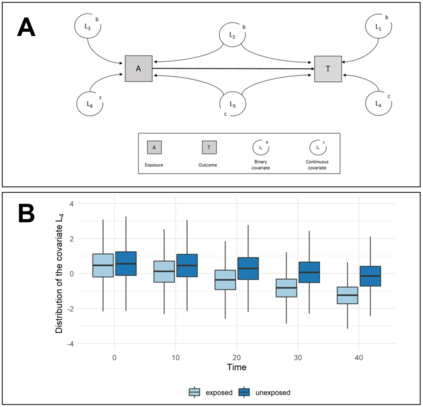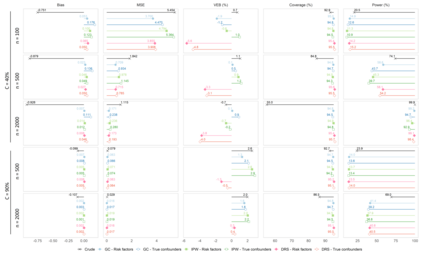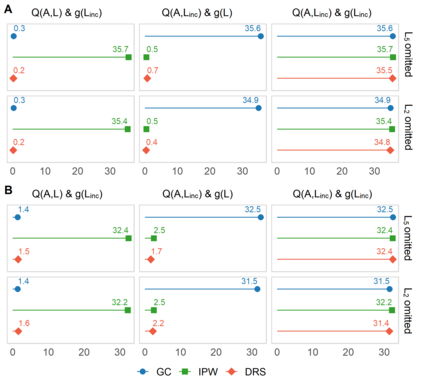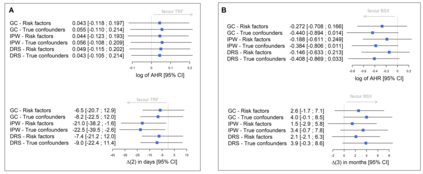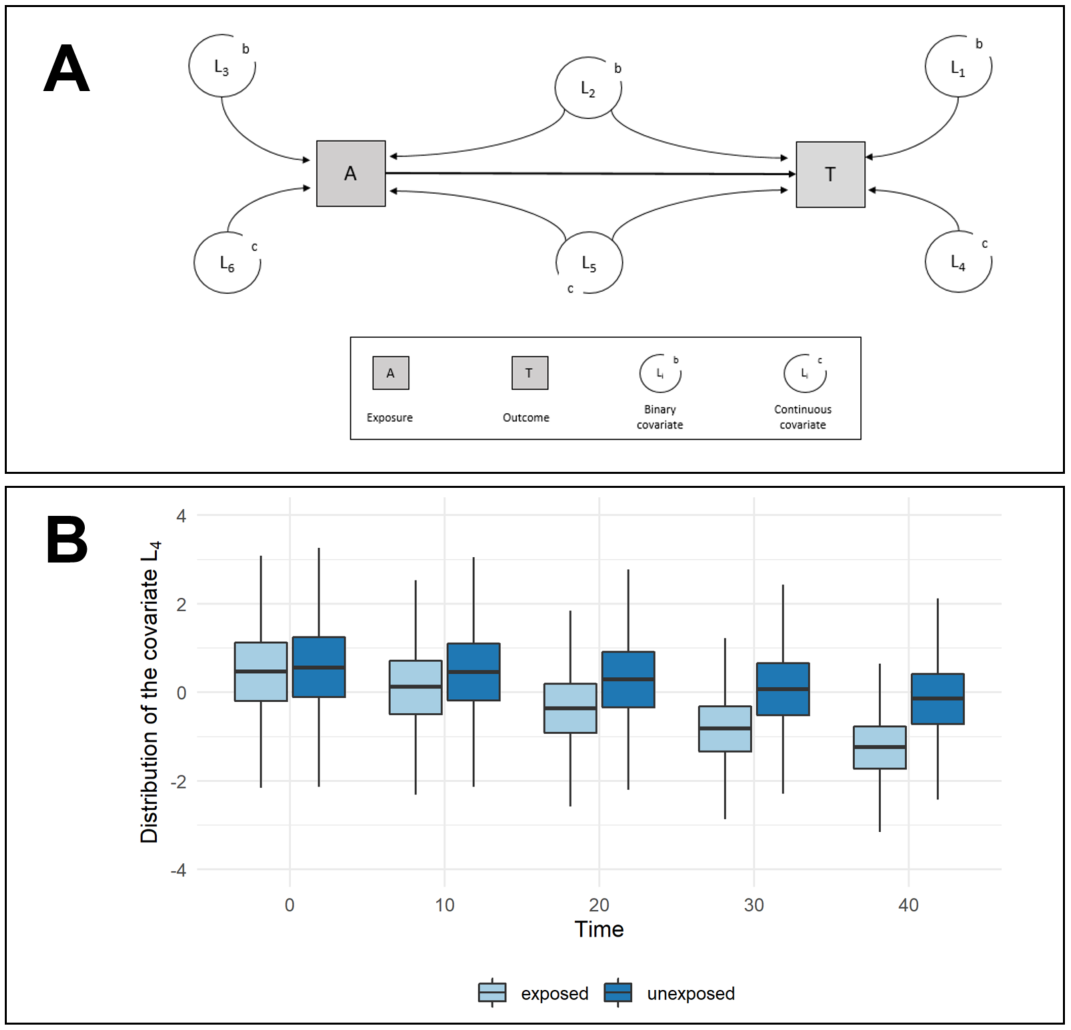In time-to-event settings, g-computation and doubly robust estimators are based on discrete-time data. However, many biological processes are evolving continuously over time. In this paper, we extend the g-computation and the doubly robust standardisation procedures to a continuous-time context. We compare their performance to the well-known inverse-probability-weighting (IPW) estimator for the estimation of the hazard ratio and restricted mean survival times difference, using a simulation study. Under a correct model specification, all methods are unbiased, but g-computation and the doubly robust standardisation are more efficient than inverse probability weighting. We also analyse two real-world datasets to illustrate the practical implementation of these approaches. We have updated the R package RISCA to facilitate the use of these methods and their dissemination.
翻译:在时间到活动的环境中,G-计算和双倍强势估计基于离散时间数据,但许多生物过程随着时间的推移而不断演变。在本文中,我们将G-计算和双倍强的标准化程序推广到一个连续的时间范围内。我们用模拟研究将其性能与众所周知的反概率加权估计危险比率和有限平均生存时间差异的估计标准进行比较。在正确的模型规格下,所有方法都是不带偏见的,但G-计算和双倍强的标准化比反概率加权效率更高。我们还分析了两个真实世界数据集,以说明这些方法的实际执行情况。我们更新了R组合的RISCA,以便利这些方法的使用和传播。

